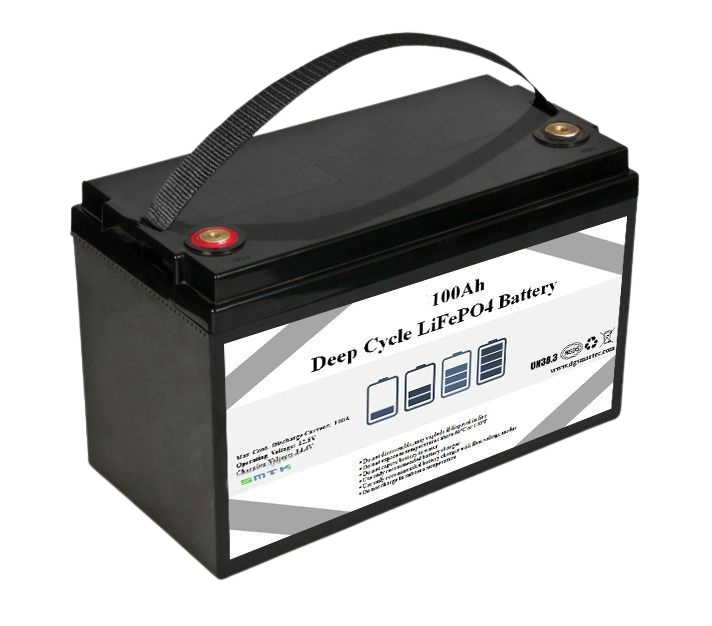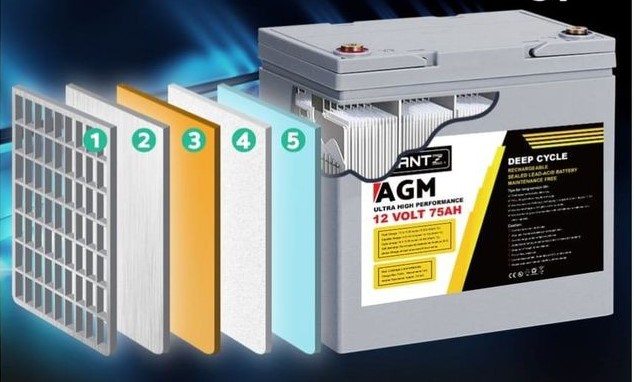What is an SLA Battery?
Contents

Sealed lead-acid, or SLA batteries, are rechargeable in various gadgets and uses. SLA batteries are sealed and don’t need water added to them frequently as traditional batteries do. They produce electricity through chemical reactions between sulfuric acid and lead plates. SLA batteries are a well-liked option for electric vehicles, backup power systems, and many other applications because of their reputation for dependability, flexibility, and affordability. An extensive introduction to SLA batteries and their importance in contemporary technology is given in this book.
History of SLA Battery

SLA batteries were first created for military use in the 1970s. Because of their dependability, they were first used in harsh conditions before becoming more and more common in consumer and industrial applications. SLA batteries are now more widely available and reasonably priced because of production techniques and technological developments. These days, they are commonly utilized in various industries, including telecommunications, medical equipment, and security systems. The advancement of SLA batteries has stimulated energy storage innovation and contributed to developing practical and sustainable power solutions.
How Does an SLA Battery Work?
An SLA battery’s lead plates and sulfuric acid electrolyte combine chemically to power the gadget. Lead sulfate and water build up on the lead plates during battery charging. During discharge, these materials mix to produce lead sulfate, water, and energy, completing the cycle.
Types of SLA Batteries

Gel cell and absorbent glass mat (AGM) batteries are the two varieties of SLA batteries. AGM batteries have a specific fibreglass mat to absorb the electrolyte, while gel cell batteries use a thick, gel-like electrolyte. Both varieties are maintenance-free, sealed, and deliver dependable operation. Applications like cars and UPS systems that require high power output and fast recharge times are perfect for AGM batteries. Gel cell batteries, on the other hand, work better in deep cycle applications like solar energy systems and electric wheelchairs where long-term energy storage and endurance are essential.
Applications of SLA Batteries

The reliability and versatility of SLA batteries make them widely used in various industries and everyday applications. It can also applied to many files like Medical, Communication Equipment, Office Equipment, Security Systems, Small Power Tools, Toys,
Automotive Applications: Trucks, vehicles, and boats commonly employ SLA batteries. Their fantastic power and long lifespan make them a popular choice for these vehicles.
Security systems SLA batteries are often used in emergencies and backup power systems. They are suitable for these applications because of their reputation for longevity.
Applications for Recreational Vehicles: SLA batteries are used in campers and RVs, among other types of recreational vehicles. They are an excellent fit for these kinds of cars due to their extended lifespan and high-power reputation.
Industrial Uses: SLA batteries have extensive applications in various industrial environments, such as industrial equipment and electric forklifts. They are suitable for these applications because of their reputation for having a long life and great power.
Telecommunications sector: SLA batteries serve as backup power sources for critical infrastructure, ensuring uninterrupted communication during power outages.
Medical devices, including portable defibrillators and patient monitors, rely on SLA batteries for dependable performance during emergencies.
SLA batteries power UPS (Uninterruptible Power Supply) systems, safeguarding sensitive electronic equipment from voltage fluctuations and power interruptions.
Overall, the extensive applications of SLA batteries underscore their importance in providing reliable and efficient power solutions for commercial and personal use.
Advantages of SLA Batteries

Maintenance-Free: SLA batteries are sealed, so they do not need to add water regularly.
Versatility: They are appropriate for indoor and outdoor applications and can be positioned differently.
Reliability: SLA batteries function consistently under various operating temperatures and circumstances.
Cost-Effectiveness: Long-term cost savings and low maintenance requirements offset the potentially higher initial expenses than conventional lead-acid batteries.
Disadvantages of SLA Batteries

Weight: SLA batteries are less suited for portable applications since they weigh more than other battery chemistries.
Limited Depth of Discharge: SLA batteries are best suited for applications with shallow cycling because deep discharges can shorten their lifespan.
Environmental Impact: If sulfuric acid and lead from SLA batteries are not disposed of appropriately, there will be environmental problems. Programs for recycling are necessary to lessen their effects.
Tips for Maintaining SLA Batteries

Proper charging: Use a suitable charger and follow the manufacturer’s recommended voltage and current limits to ensure appropriate charging.
Preventing Over-discharge: By preventing deep discharges, you can extend the life expectancy of SLA batteries.
Temperature Control: Because severe temperatures can impact SLA batteries’ performance, storing and using them within the authorized temperature range is imperative.
Frequent Inspections: Replace defective batteries immediately and watch for any physical damage, leaks, or corrosion.
Future Trends in SLA Battery Technology
SLA battery technology development goals are improving longevity, energy density, and environmental sustainability. Researchers are investigating novel electrolyte compositions and production processes to increase efficiency and lessen their adverse ecological effects. To increase the range of uses for SLA batteries, efforts are also being made to incorporate them with cutting-edge technology like electric cars and renewable energy sources. SLA batteries are anticipated to continue developing as dependable, effective, and environmentally friendly energy storage options with continued research and development, satisfying the rising demand for sustainable power sources in various industries and daily applications.
Conclusion
In conclusion, SLA batteries are essential for supplying power to various gadgets and uses because of their affordability, adaptability, and dependability. They are now necessary energy storage options for everything from electric cars to telecoms. It is essential to comprehend how they should be used, maintained, and disposed of to maximize efficiency and reduce environmental effects. SLA batteries are positioned to remain crucial to our energy infrastructure and provide long-term, sustainable power solutions thanks to continuous technical improvements. It is possible to fully utilize the potential of SLA batteries to satisfy society’s various energy demands by embracing innovation and implementing responsible practices.
FAQs
How long do SLA batteries last?
The life expectancy of an SLA battery depends on operational conditions, consumption patterns, and maintenance schedules. With the proper maintenance, SLA batteries can last three to five years or more. Regular maintenance, avoiding deep discharges, and charging and storing SLA batteries under manufacturer guidelines can all help to prolong their lifespan.
Can SLA batteries be recycled?
Recycling SLA batteries is a good idea if you want to reduce your environmental effects. Lead and sulfuric acid, utilized in SLA batteries, can be dangerous if mismanaged. Certain battery retailers and recycling facilities offer old SLA battery recycling programs. It’s imperative to dispose of old batteries sustainably and by municipal regulations governing the disposal of hazardous trash.
Can SLA batteries be used in extreme temperatures?
SLA batteries have been designed to operate in various temperatures, and extremely high or low temperatures can negatively impact them. SLA batteries must be stored in the manufacturer’s suggested temperature range. Cold temperatures can lower the battery’s capacity and efficiency, while extreme heat can accelerate chemical reactions and cause premature aging. The impact of extremely high or low temperatures on SLA batteries can be lessened using insulation or temperature-controlled enclosures.







